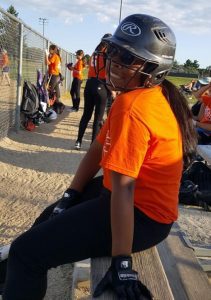 Rosie had always been a hardworking student. But as she got older, schoolwork got more difficult, especially reading. More specifically, Rosie didn’t seem to be understanding what she was reading. And the advice from teachers — slow down, ask more questions — didn’t seem to help her comprehension.
Rosie had always been a hardworking student. But as she got older, schoolwork got more difficult, especially reading. More specifically, Rosie didn’t seem to be understanding what she was reading. And the advice from teachers — slow down, ask more questions — didn’t seem to help her comprehension.
By Dr. Kellye Knueppel
This post originally appeared on MadisonMom.com.
To make matters worse, she was also beginning to have headaches when she did her homework, along with intermittent double vision, though at the time she didn’t quite know how to describe that to others.
Naturally, she began to dislike reading, and her parents knew they had to find help for her.
Finding the Source of Rosie’s Struggles
At the suggestion of a family therapist, Rosie first came to The Vision Therapy Center for a Functional Vision Exam when she was in seventh grade. The results showed that Rosie’s eyes were working so hard just to focus on the words themselves that it left little room for her to understand them.
It’s a situation developmental optometrists often see. As my colleague Dr. Heather Motisi explains it, “Rosie had to devote 75 to 80 percent of her effort to the physical act of reading. But that only leaves 20 to 25 percent for memory and comprehension.”
The visual issues that Rosie had were caused largely by problems with her functional vision. Let’s take a closer look at what that means.
Functional Vision Problems May Not Be Detected with a Conventional Eye Exam
The exam Rosie received is different from a conventional eye exam, which primarily measures visual acuity, or 20/20 eyesight. Functional vision is how your entire visual system — the eyes, the brain, the visual pathways — works together to help you interact with your environment.
Rosie’s initial Functional Vision Exam confirmed that she had a pronounced astigmatism in her right eye, a problem that had been diagnosed by an optometrist way back when she was in first grade. In fact, Rosie had been prescribed glasses for this.
But unfortunately, Rosie didn’t like wearing glasses, which led her to rely heavily on her left eye for many activities, like sports, reading, and other homework assignments.
The exam also revealed the following functional vision problems:
Convergence insufficiency. With convergence insufficiency, a person may be unable to maintain focus on an object as it comes closer to their eyes, i.e., it’s difficult for their eyes to converge.
And if your eyes don’t converge efficiently, it can adversely affect the ability to concentrate on otherwise simple tasks. This can result in visual discomfort, headaches, and even double vision — things Rosie sometimes experienced — when performing near-point activities like reading.
Irregular saccades. Saccades is a visual skill that enables a person to make quick eye movements from one object to another. When watching a tennis match, for example, saccadic movements allow you to switch fixation from one player to the other as the ball goes back and forth. Irregular saccades make that more challenging.
For Rosie, this problem likely affected her ability to perform certain athletic activities like softball. In fact, she earned the nickname “Two-Strikes Rosie,” recalls her dad, because she so often would have two strikes before ultimately hitting the ball. “We later realized it took her a couple of pitches to figure out where the ball was.”
Accommodative insufficiency. The technical term for the eyes’ ability to focus is called accommodation. Tiny muscles inside your eyes contract or relax to change the shape of your eyes’ lenses and allow you to bring objects at different distances into focus.
When you focus on something close, the muscles contract, and when you focus on something in the distance, they relax. In Rosie’s case, she had difficulty sustaining focus on objects up close, such as reading material.
 Optometric Vision Therapy Provides a Solution to Rosie’s Vision Problems
Optometric Vision Therapy Provides a Solution to Rosie’s Vision Problems
Rosie’s mom and dad were surprised by the results, but also relieved. With the problems now diagnosed, there was hope: Functional vision problems can often be helped with optometric vision therapy.
In Rosie’s case, she began 36 weeks of weekly in-office optometric vision therapy, which involved a series of activities designed to retrain her visual system. Over this period, she also completed daily at-home vision exercises to support her progress.
Better Homework Habits PLUS No More Headaches or Double Vision
Today, Rosie is throwing, catching, and hitting the softball better than ever. “I can see the ball coming now,” she says. And her mom happily reports that her reading speed and comprehension “just skyrocketed from when she was first tested.”
Rosie can also do her homework much more efficiently. “In the past, the homework that was reading-heavy was just so grueling for her,” says her dad. But now, “She’s not reluctant to just sit down with the book, do the reading, answer the questions, and be done with it.”
In addition, her headaches and double vision have vanished. Rosie’s parents are obviously happy about the results of her vision therapy. But they can’t help but wonder about other children who may have issues similar to Rosie’s.
“We had no idea that vision therapy was out there. I just wish more people knew about it, because vision therapy was so worth it for Rosie.”
A Vision Quiz Can Be the First Step Toward Detecting a Problem
If you think your child may be suffering from vision problems similar to Rosie’s, a smart first step toward diagnosis is to take The Vision Therapy Center’s free online Vision Quiz.
It can help identify if your child is suffering from any of the symptoms associated with functional vision problems.
And if your child does have a functional vision problem, there’s good news: Optometric vision therapy has proven to be highly effective at solving a wide range of functional vision problems.
Click here to take the Vision Quiz.
About the author: Dr. Kellye Knueppel is an award-winning developmental optometrist specializing in vision related learning problems, sports vision, and rehabilitative optometry. She is board certified in vision development as a Fellow of the College of Optometrists in Vision Development. Since opening The Vision Therapy Center in 1995, she has dedicated herself to helping people overcome their visual problems.









